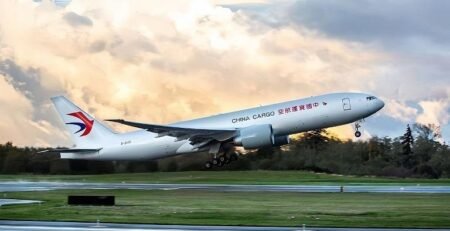Asia–Mexico Air Bridge Hits Record: E-commerce and Auto Parts Drive Demand

In the middle of the night at Mexico City’s airport, ground crews unloaded pallets of smartphones, fast fashion, and automotive spares from an incoming widebody jet. Flights like these have become routine, but the numbers now tell a bigger story: the Asia–Mexico air cargo bridge has reached record volumes this autumn.
The shift started slowly during the pandemic, when supply chains sought alternatives to U.S. gateways clogged with backlogs. Now, it’s a structural lane. Demand for electronics, textiles, and auto components has turned Mexico into one of Asia’s fastest-growing long-haul cargo partners. Forwarders describe flights landing “heavier than ever,” with load factors consistently above 90 percent.
Capacity has followed. Airlines based in Asia and Latin America have quietly added frequencies, some moving from three flights per week to daily rotations. Spot rates that once looked volatile have now stabilized at high levels, reflecting a lane that exporters and importers both treat as mission-critical.
Behind the growth are two pillars. First, Mexico’s automotive clusters—Monterrey, Puebla, Guanajuato—rely on just-in-time deliveries of precision parts. Second, the explosion of cross-border e-commerce is funneling parcels through Mexican hubs before they move north into the United States. Logistics managers say what used to be “overflow cargo” is now a fixed part of procurement planning.
For global shippers, the message is clear: Asia–Mexico is no longer a niche trade. It has matured into a corridor of its own, complete with predictable lift, regular schedules, and reliable pricing. The question for 2026 is not whether it grows, but how quickly.
The post Asia–Mexico Air Bridge Hits Record: E-commerce and Auto Parts Drive Demand appeared first on The Logistic News.
Share this post
Related
Posts
MEXICO – Truckers’ roadblocks disrupt North American flows
Since dawn, several Mexican highways have looked more like improvised parking lots than logistical corridors. Groups of drivers block entire...
China Cargo Airlines launches new Paris–Shanghai freight service
China Cargo Airlines inaugurates a direct Paris–Shanghai freight flight, complemented by feeder road connections across Western Europe. This corridor meets...
Hudong-Zhonghua de Chine établit un nouveau record pour les livraisons de méthaniers
Chinese shipbuilder Hudong-Zhonghua Shipbuilding today delivered its ninth LNG carrier of the year, marking a new record for a single...
Onboard cameras: technology alone is insufficient in the absence of a true policy
The problem of cameras mounted on trucks was discussed at the Trimble Insight 2025 trade exhibition mainly from the aspect...




